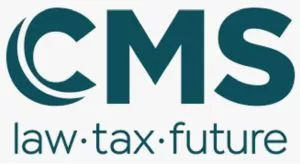I. Background
The current environment of global uncertainty, marked by significant events such as armed conflicts and drastic changes in interest rates, has considerably amplified the importance of liquidity management in the fund sector, largely due to concerns over potential liquidity mismatch between a fund's illiquid investments and its investors' redemption rights.
Under the reform of the alternative investment fund managers directive (AIFMD) and undertakings for collective investment in transferable securities directive (UCITSD), the European Securities and Markets Authority (ESMA) was mandated to namely (i) draft regulatory technical standards (RTS) to determine the characteristics of the liquidity managements tools set out in Annex V of AIMFD and Annex IIA of UCITSD, and (ii) develop guidelines (the Guidelines) on the selection and calibration of liquidity management tools by alternative investment fund managers (AIFMs) or UCITS management companies (UCITS ManCos).
In that context, ESMA launched on 8 July 2024 two consultations (the Consultations) on liquidity management tools (LMTs), respectively on draft Guidelines and RTS under the revised AIFMD and the UCITSD. These aim to harmonise liquidity risk management in the investment funds sector, mitigate potential financial stability risks and enhance EU fund managers' ability to manage fund liquidity during market stress situations.
The purpose of this publication is to provide a general and non-exhaustive overview of the key elements of ESMA's draft RTS and Guidelines.
II. Key elements
a. The RTS
The RTS define the constituting elements of each LMT in turn, such as calculation methodologies and activation mechanisms (the below list and content being not exhaustive):
- Suspensions of subscriptions, repurchases and redemptions: these are not part of the two LMTs that AIFMs/UCITS ManCos should at least select according to Article 16(2)(b) of AIFMD or Article 18a(2) of UCITSD and should be used in exceptional circumstances. Suspensions of subscriptions and suspensions of repurchases/redemptions should apply simultaneously and for the same period of time and shall apply to all investors and all share classes of the fund (as applicable). Their use should be temporary and accompanied by a plan for the future of the AIF/UCITS.
- Redemption gates: the method for determining the activation threshold should consist in considering all redemption orders for a given dealing date and the non-executed part of the redemption orders should be automatically carried over to the next dealing date. AIFMs/UCITS ManCos should have the flexibility to determine whether or not to automatically activate redemption gates when the threshold is exceeded. When activated, the same level of redemption gate shall apply to all redeeming investors and shareholders/unitholders should have the possibility to withdraw that part of their redemption order(s) that has not been executed. Non-executed parts of redemption orders that are carried forward to the next dealing date may have priority over redemptions orders submitted for the following dealing date.
- Extension of notice period: when the notice period is extended, the dealing frequency of AIFs/UCITS should not be modified. The extension shall apply to all investors and to all share classes (as applicable).
- Redemption fees: these should be based on individual redemption orders and should be deducted from the amount of money paid to redeeming investors for the benefit of the fund. Different redemption fees may be applied at the level of the fund based on the size of the redemption orders.
- Swing pricing: swing pricing should include a swing factor whose purpose is to impose on redeeming/subscribing shareholders or unitholders the estimated explicit and implicit costs of portfolio transactions caused by subscriptions or redemptions, including any significant market impact of asset purchases or sales to meet those subscriptions or redemptions. When activated, the NAV of the AIF/UCITS should be adjusted to incorporate such swing factor. AIFMs/UCITS ManCos may decide to adjust the NAV of the fund on every dealing date for which there is a net activity of any size between redemptions/subscriptions (i.e. full swing) or only when the net redemptions/subscriptions are greater than a pre-determined swing threshold (i.e. partial swing).
- Dual pricing: AIFMs/UCITS ManCos should be able to choose between two methods: (a) calculating one NAV incorporating assets' ask prices and the other NAV incorporating assets' bid prices for subscribing investors to pay the NAV calculated using ask asset prices, while redeeming investors receive the NAV calculated using bid asset prices; and (b) setting and "adjustable spread" around the fund's NAV under which assets are priced on a mid-market basis, with a bid price at which the fund redeems shares and an offer price at which the fund issues new shares.
- Anti-dilution levies: they should be charged to redeeming/subscribing investors when the number of redemptions exceed the number of the subscriptions or the opposite. They should impose on redeeming/subscribing shareholders or unitholders the estimated explicit and implicit costs of portfolio transactions caused by subscriptions/redemption, including any estimated significant market impact of asset purchases or sales to meet those subscriptions/redemptions.
- Redemptions in kind: they should only be available for redemption orders placed by professional investors and executed on a pro-rate basis of their assets held by the AIFs/UCITS. If the AIF/UCITS is solely marketed to professional investors or if the investment policy is to replicate the composition of a certain stock/debt securities index and that AIF/UCITS is an ETF fund, AIFMS/UCITS ManCos may derogate from the obligation to execute redemptions in kind on a pro-rata basis.
- Side pockets: AIFMs/UCITS ManCos should have the choice between a physical separation or an accounting segregation of assets for which there are valuation issues or legal uncertainty. Once created, side pockets should be closed for subscriptions/redemptions and should be managed with the sole purpose of being liquidated.
b. The Guidelines
These Guidelines aim at establishing common standards in relation to the selection, activation and calibration of LMTs to harmonise their use among Member States, while promoting disclosure to investors and a clear governance framework around the LMTs.
Within two months of the date of publication of the Guidelines on ESMA's website in all EU official languages, competent authorities must notify ESMA whether they (i) comply, (ii) do not comply, but intend to comply, or (iii) do not comply and do not intend to comply with the Guidelines.
General and governance principles
The Guidelines on LMTs revolve around three pillars: the selection, the calibration and the (de)activation of LMTs. While the selection only applies to LMTs under points 2 to 8 of Annex V of AIFMD or Annex IIA of UCITSD (i.e. redemption gate, extension of notice periods, redemption fee, swing pricing, dual pricing, anti-dilution levy, redemption in kind, together the Predefined List), the calibration and (de)activation also apply, on top of the Predefined List, to the suspension of subscriptions, repurchases and redemptions, as well as side pockets.
ESMA reminds that the primary responsibility for liquidity risk management, and for the selection, calibration and (de)activation of LMTs, lies with the fund manager.
The revised AIFMD and UCITSD require the selection of at least two appropriate LMTs from the Predefined List, which suitability should be assessed based on:
a) The fund's investment strategy and investment policy;
b) The fund's structure, notably with respect to the duration of the notice period, the lock-up period, settlement period and dealing frequency;
c) The fund's liquidity profile, its underlying assets and liquidity demands, considering not only redemptions but also other potential sources of liquidity risk coming from the liability side of the fund balance sheet under normal and stressed market conditions, as well as results of the liquidity stress testing;
d) The fund's redemption policy and the characteristics of its investor base; and
e) The fund's distribution policy.
Upon request from the relevant national competent authority (NCA), the AIFM/UCITS ManCo should be able to demonstrate that the activate/calibration(s) of the selected LMT(s) is (are) in the best interest of all investors, appropriate and effective for the prevailing market conditions (normal or stressed).
A depositary should put in place verification procedures to appropriately check managers' procedures for LMTs.
The selected LMTs, their calibration methodology and activation conditions should be laid down in an LMT policy. To that end, the Guidelines include a list of the minimum aspects that should be included in the LMT policy.
Guidelines on targeted LMTs
This section provides targeted guidelines on the selection, activation and calibration of for each type of LMTs, as applicable.
Guidelines on the disclosure to investors
AIFMs/UCITS ManCos should provide appropriate disclosure on the selection, calibration and conditions for (de)activation of the selected LMTs in the fund's constitutive documents, prospectus and/or periodic reports, while indicating that the main purpose of LMTs is to facilitate fair treatment of investors by protecting the ones that remain invested in the fund from bearing the costs generated by other investors' subscriptions/redemptions.
Appropriate pre-contractual information should be provided to investors on the implications of LMTs in terms of liquidity costs or access to their capital, making sure that these are properly incorporated in their investment decisions.
However, ESMA warns that disclosure of detailed calibration of LMTs and the activation thresholds should be avoided, as these could be used by some investors to the detriment of other investors, and that the disclosure in public reports of the actual adjustment used by funds could jeopardise the effectiveness of LMTs and should rather be replaced by disclosing a range of used factors or delayed disclosure after application.
This section also contains specific guidelines on disclosure with respect to particular LMTs such as anti-dilution tools, redemption gates or side pockets.
III. What's next?
As a reminder, Directive (EU) 2024/927 (known as AIFMD II), modifying both the AIMFD and the UCITSD, entered into force on 15 April 2024, and Member States have until 16 April 2026 to implement its rules, to the exception of certain measures that must be implemented from 16 April 2027.
The two Consultations mark an important step towards the implementation of AIFMD II and are open until 8 October 2024. Following this deadline, ESMA will deliver its final RTS and Guidelines by 16 April 2025.
Finally, under Article 16(2)(f) of AIFMD ESMA shall develop, by 16 April 2025, draft RTS to determine the requirements with which loan-originating AIFs are to comply to maintain an open-ended structure. ESMA will consult on these RTS separately at a later stage.
The content of this article is intended to provide a general guide to the subject matter. Specialist advice should be sought about your specific circumstances.





